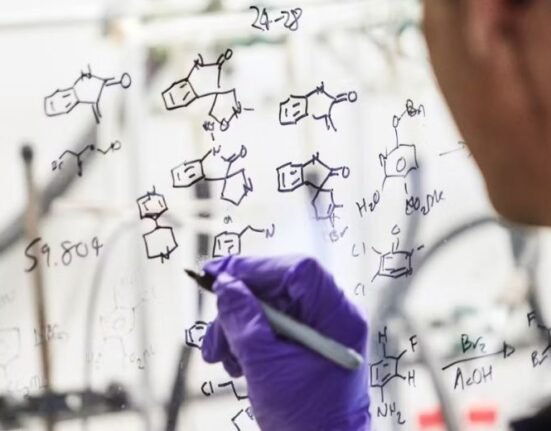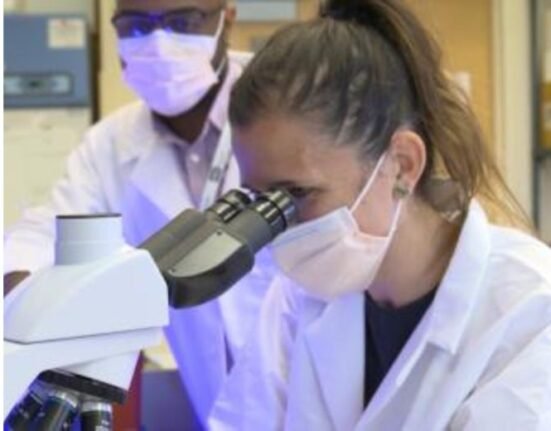By K. Leelamoni
March 18, 2024: Akhila came up with a surprise statement while I was talking to her. “Mam’ I have multiple sclerosis (MS).”
It rang loud in my ears as the disease was not a common condition that I encountered. There is no complete cure so far for the disorder that affects an estimated 1.8 million people worldwide, according to the WHO.
Genentech, a unit of the Roche Group, has started selling ocrelizumab, branded as Ocrevus, for the treatment of multiple sclerosis in the second most populous nation recently—a drug that is a boon for MS patients.
Young women who often suffer from this neurodegenerative disease lead a difficult life due to the chronic suffering related to vision, movement and other activities of the body.
The 22-year-old Akhila, a medical student was putting up a poor performance in her college studies and had an attendance shortage.
Inability to concentrate
She was suffering from difficulties in vision, severe on-and-off pain and an inability to concentrate and to remember. I am now relieved to know that she is under the treatment of a neurologist and is becoming better after treatment.
The one hat she proudly wears now is her graduation from the medical course.
Multiple sclerosis is an inflammatory demyelinating condition as a result of an autoimmune attack on myelin, the insulation surrounding the nerves in the brain and spinal cord.
It disrupts the electrical impulses that are sent through the nerves to the rest of the body to perform functions like vision, sensation, cognitive, emotional and movement.
The term multiple sclerosis refers to the areas of scar tissue or sclerosis or plaques on the brain and spinal cord following the attack on myelin by the immune system. They may vary in size from a pinhead to a golf ball and are visible usually by magnetic resonance imaging.
20-40 age group
MS is the most common disabling neurological disease of young adults between the age group of 20-40 years. It is a chronic disease that affects people differently.
Some may have a mild course and most people with MS will have short periods of symptoms followed by long spells of respite.
The exact aetiology of the disease is still unknown. A combination of genetics and environmental factors appears to be responsible. Its onset usually occurs around 20-40 years of age and women are 2-3 times more likely to develop MS.
If one of the parents had MS, there is an increased chance of a sibling developing MS. Certain viral infections like Epstein–Barr virus have been linked to MS. Low levels of vitamin D and low exposure to sunlight are associated with a higher risk.
Smoking may also raise the risk and it is associated with a higher risk, especially in obese women.
Poor bladder control
Symptoms include difficulty in walking, muscle weakness or spasms, blurred or double vision, numbness and tingling, poor bladder or bowel control, pain, depression and problems in focusing or remembering.
Relapsing-Remitting MS occurs in about 85% of people who have this type. There are periods of symptoms followed by periods of remission when visible signs of the disease stabilise or disappear.
There are no definite diagnostic laboratory tests and a magnetic resonance image can identify the plaque or sclerosis on the brain and spinal cord.
Currently, there is no cure for MS. However treatment can help to manage the symptoms. Medications can reduce relapses and the development of new lesions or scars and slow the progression of the disease.
Treatment plans may include medications like steroids and plasma exchange treatment beta interferons and other drugs. Physical, occupational or speech therapy and mental health counselling can help.
Medicine availability
Though in the past 20 years treatment options have improved dramatically, most of the medications are not available in low and middle-income countries.
Ocrevus is the first and only approved high-efficiency therapy for MS in India. It costs about 10-12 lakhs a year.
The Food and Drug Administration approved Ocrelizumabto, treat adult patients with primary progressive or relapsing sclerosis, in March 2017.
A person who receives appropriate treatment and follows a healthy lifestyle can hope for a life span almost similar to a normal healthy person.
(The writer was a former Head of the Department of Community Medicine at the Government Medical College in Kozhikode and Thiruvananthapuram and worked at the Amrita Institute of Medical Sciences in Kochi.)








